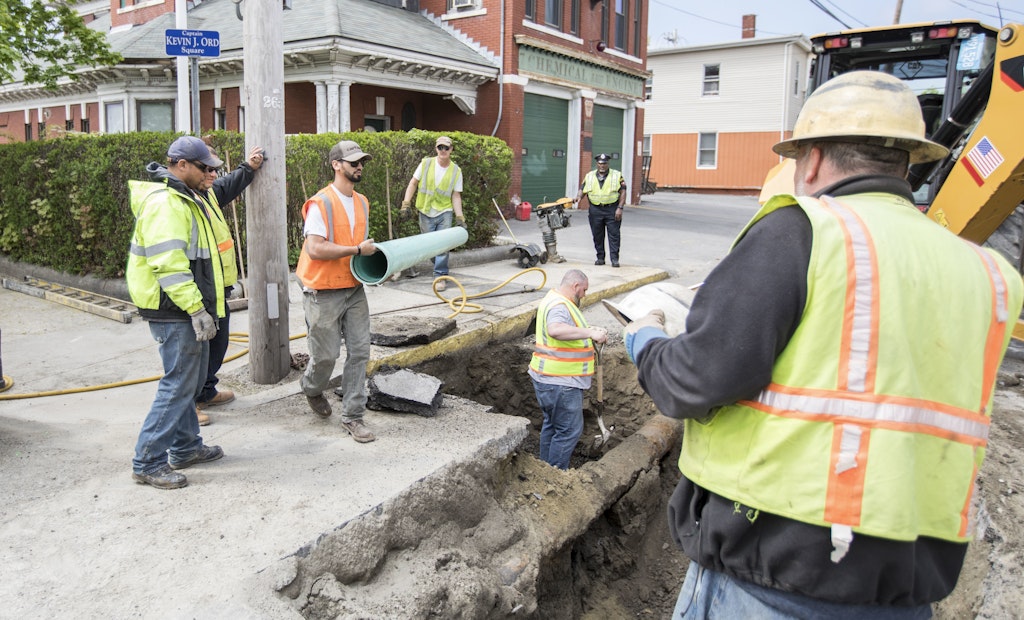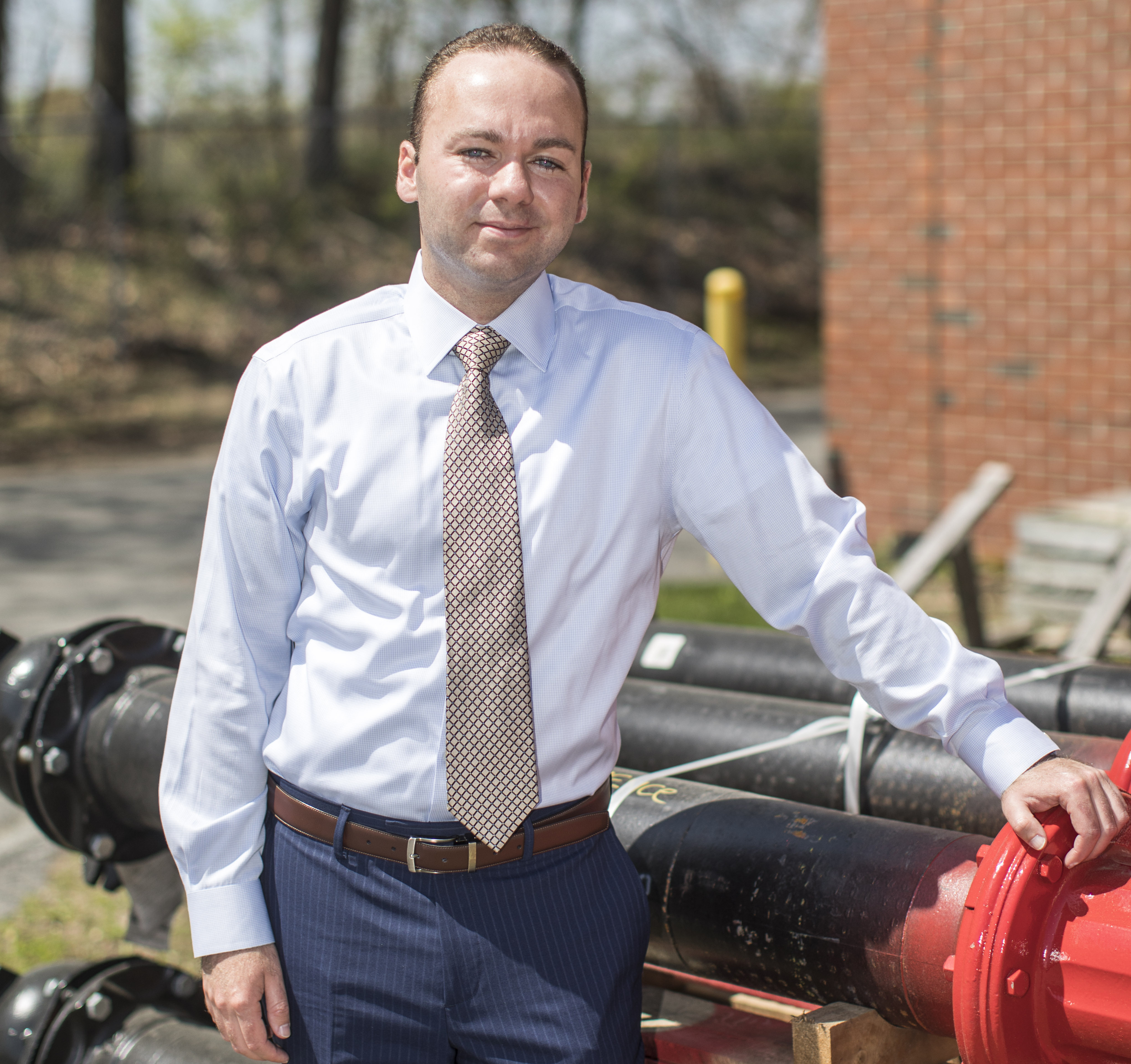
City of Lawrence Sewer and Water Department workers bring a PVC pipe to a trench before replacing a crushed drainage pipe at a job site. (Photo By Scott Eisen)
Interested in Infrastructure?
Get Infrastructure articles, news and videos right in your inbox! Sign up now.
Infrastructure + Get AlertsSpending $20 million (so far) on restoring sewer and water lines is not something many Lawrence, Massachusetts, residents are keen on. Blame human nature. Investing heavily in buried infrastructure that seems more or less functional is viewed as a waste of money compared to something like building a shiny new sports center. At least you can see a building.
Brian Pena, Lawrence water and sewer commissioner, says public support for the restorations is low. “Do we have community support for this project? I would say, no, not so much. The majority of residents see this as a nuisance and don’t see how it benefits them. It’s difficult to sell to the average taxpayer.”
Pena understands the basic problem: Lawrence is not a rich town. In fact, in the Massachusetts ranking of per capita income of cities, Lawrence — the nation’s first planned industrial community — comes in at number 351. Dead last
“All the surrounding communities are more affluent,” Pena says. “Generally, I feel that affluence and education go hand-in-hand. Fixing sewers is harder to sell to the average resident of an impoverished community.”
Even though the city administration and Pena are trying to make every dollar count, the investment of millions for a fundamental upgrade in the city’s sewer and water structure is viewed anxiously. What undoubtedly concerns some taxpayers is the likelihood of an increase in water and sewer rates to help pay for the improvements. Rate increases are, says Pena, “very sensitive topics” in Lawrence.
“If you asked the average city ratepayer when the last time was that we raised rates, he wouldn’t know. He might guess it hasn’t been that long. The fact of the matter is that we have not had a rate increase since 2009, ten years ago.”
Pena acknowledges that a higher rate probably will be a new fact of life for Lawrence residents in 2020.
Read more about the city of Lawrence in the August issue of Municipal Sewer & Water.






